Abstract
1. Extracellular and intracellular recordings were made of the electrical activity of isolated strips of human colonic smooth muscle, cut from sixty surgical specimens. 2. Strips of taenia were spontaneously active. The myogenic activity consisted in half the strips of intermittent periods of regular spike activity (frequency 22 +/- 5 (S.D.) c/min) accompanied by tetanic contractions; in the other half of the strips activity was continuous. In half the specimens, slow potentials were recorded between periods of spike activity. Slow potentials were not accompanied by contractions. 3. Spikes in taenia were abolished by verapamil. Spikes disappeared in low Ca and low Na solutions, but in low Na solution spikes could be stimulated by 15 mM-KCl. 4. ACh and physotigmine produced tetanic contractions in taenia. 5. Circular muscle was not spontaneously active within 1 h of incubation in the water bath, possibly due to inhibition by prostaglandins. 6. Circular muscle responded to ACh with irregular bursts of spikes associated with discrete contractions. Similar activity was seen after inhibition of prostaglandin synthesis with indomethacin. After treatment with tetrodotoxin, ACh produced regular spikes and tetanic contractions in circular muscle. 7. The possible relationships of these results to the myoelectrical activity of the human colon in vivo are discussed.
Full text
PDF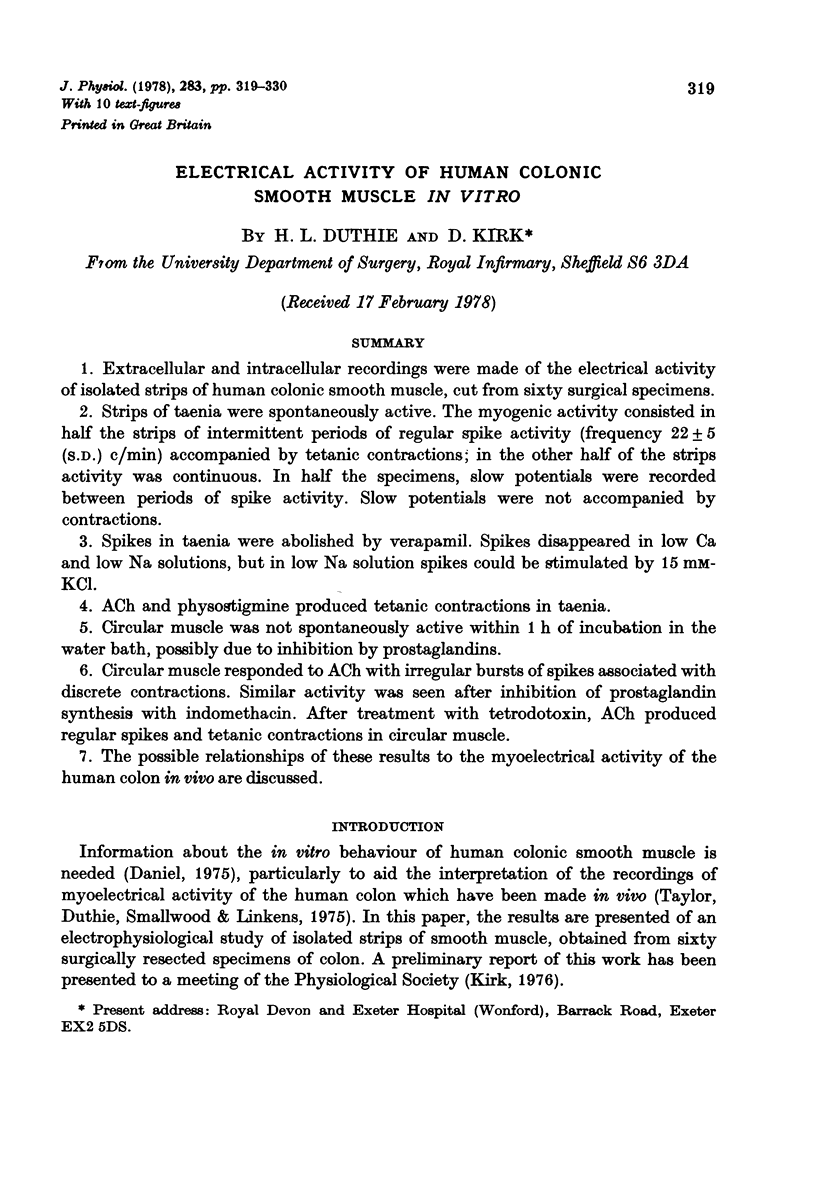
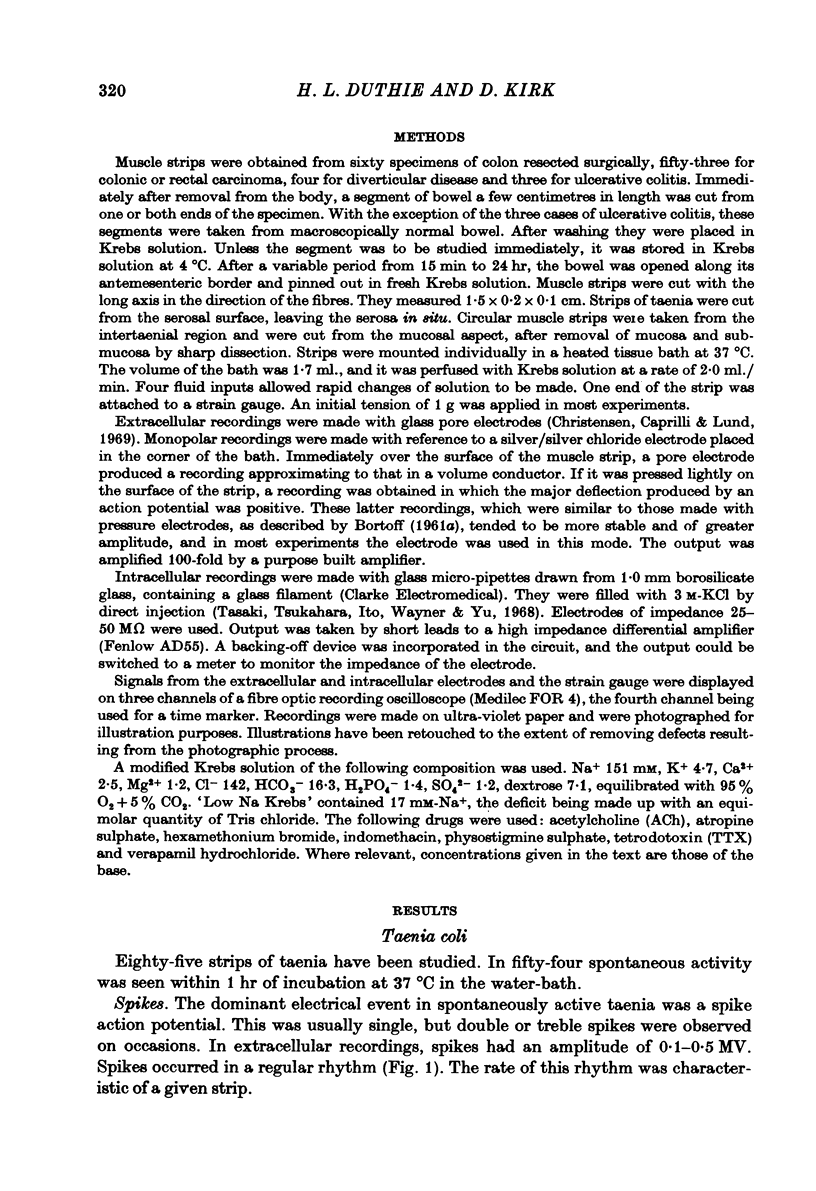
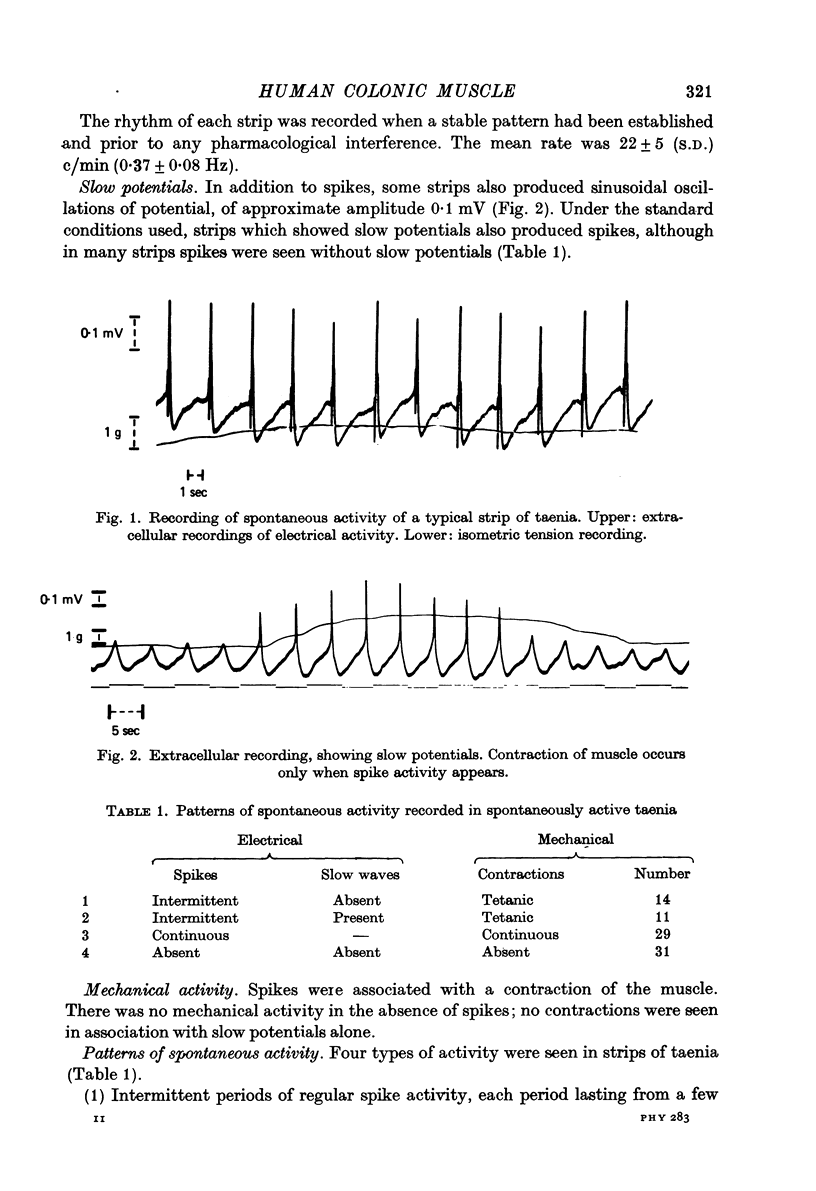
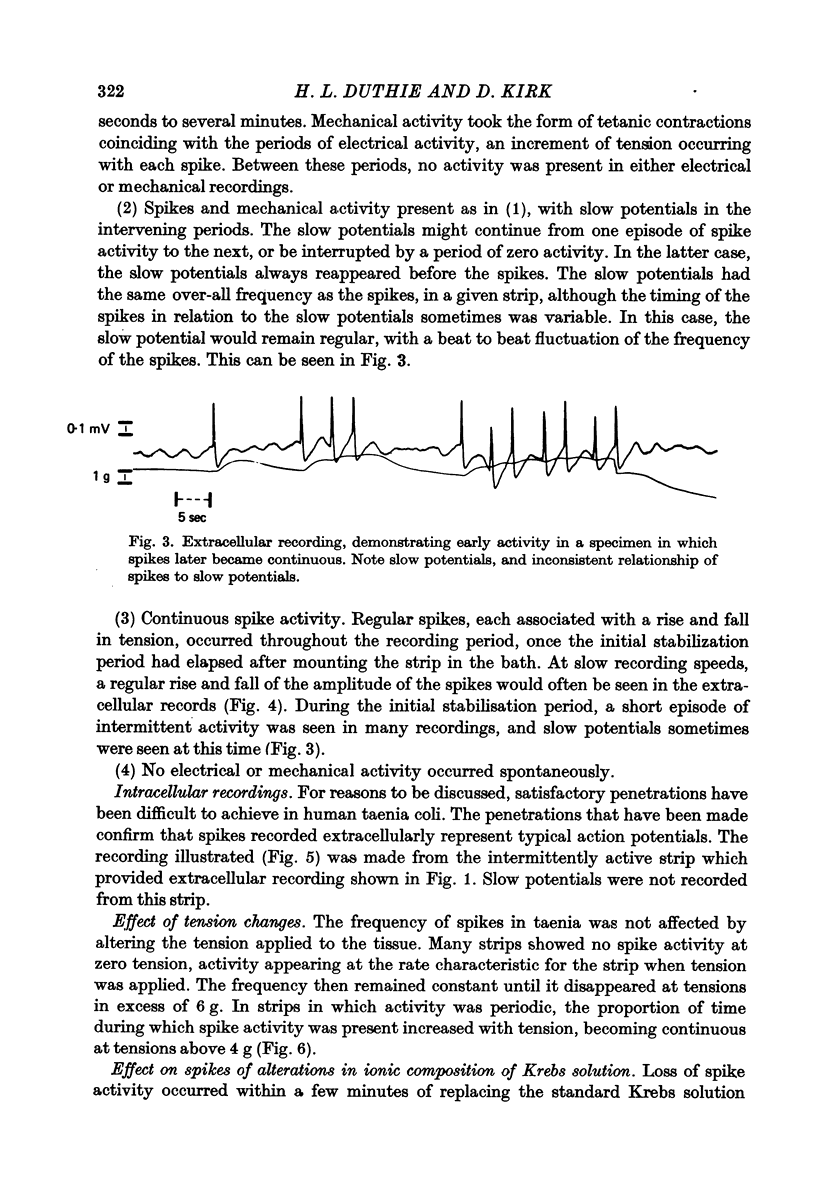
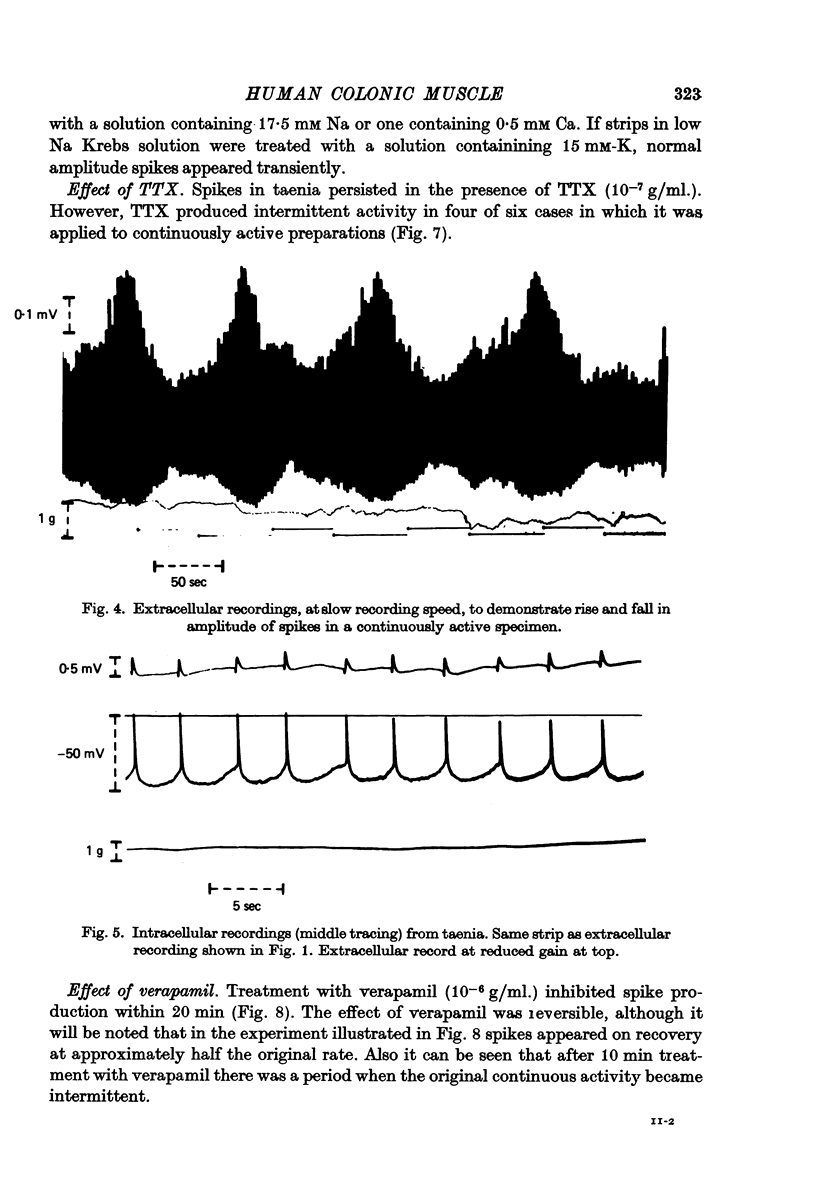
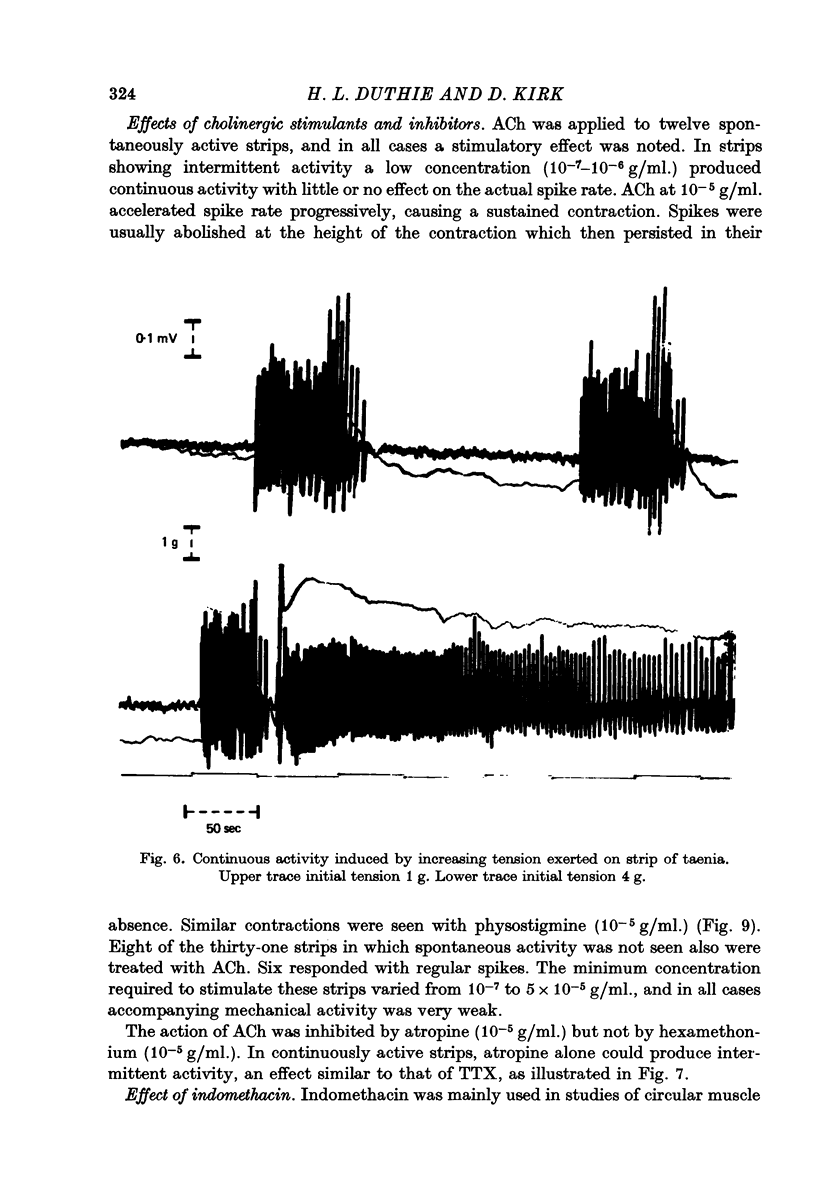


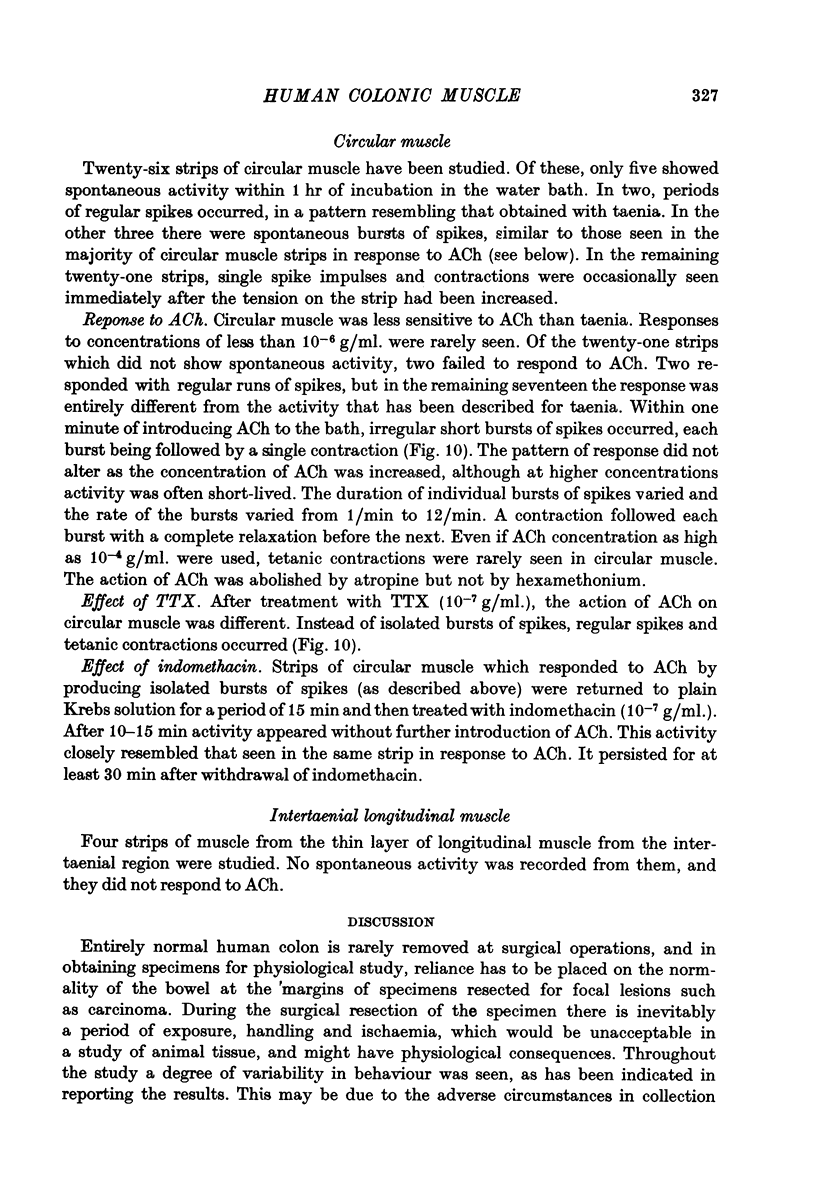
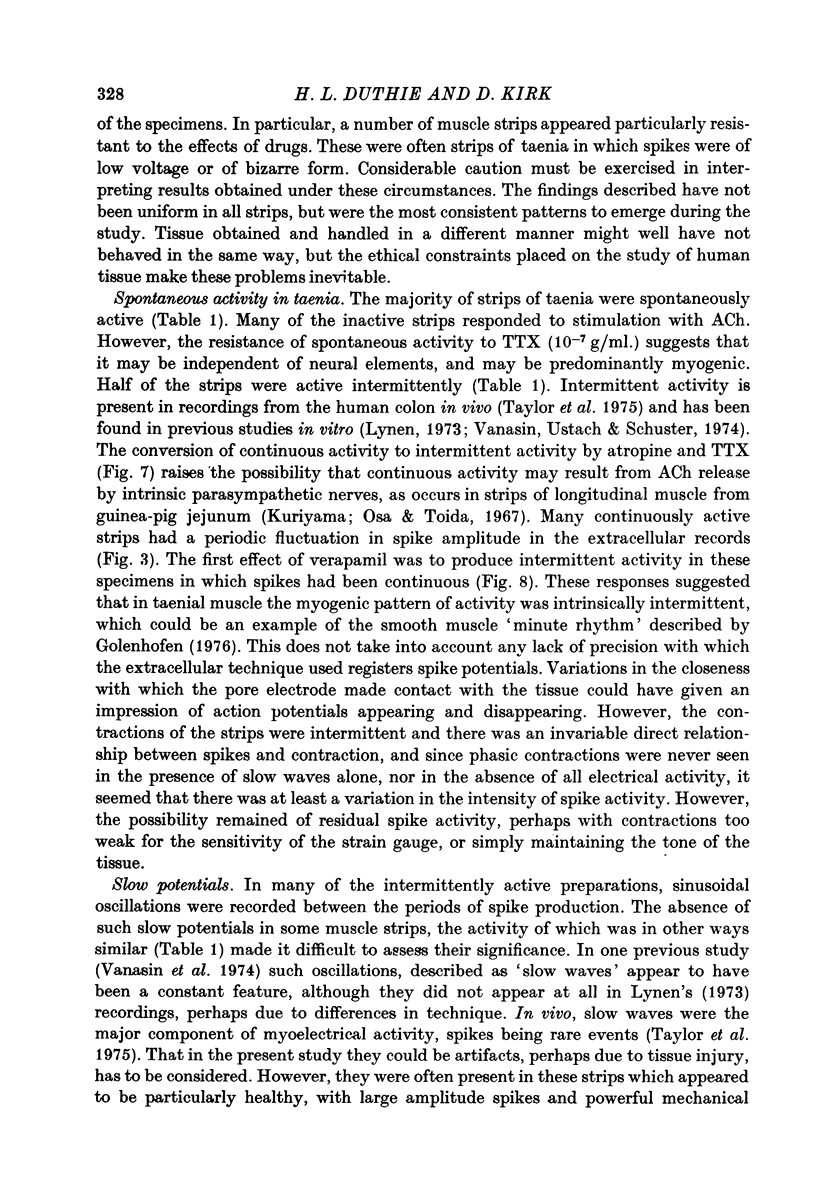
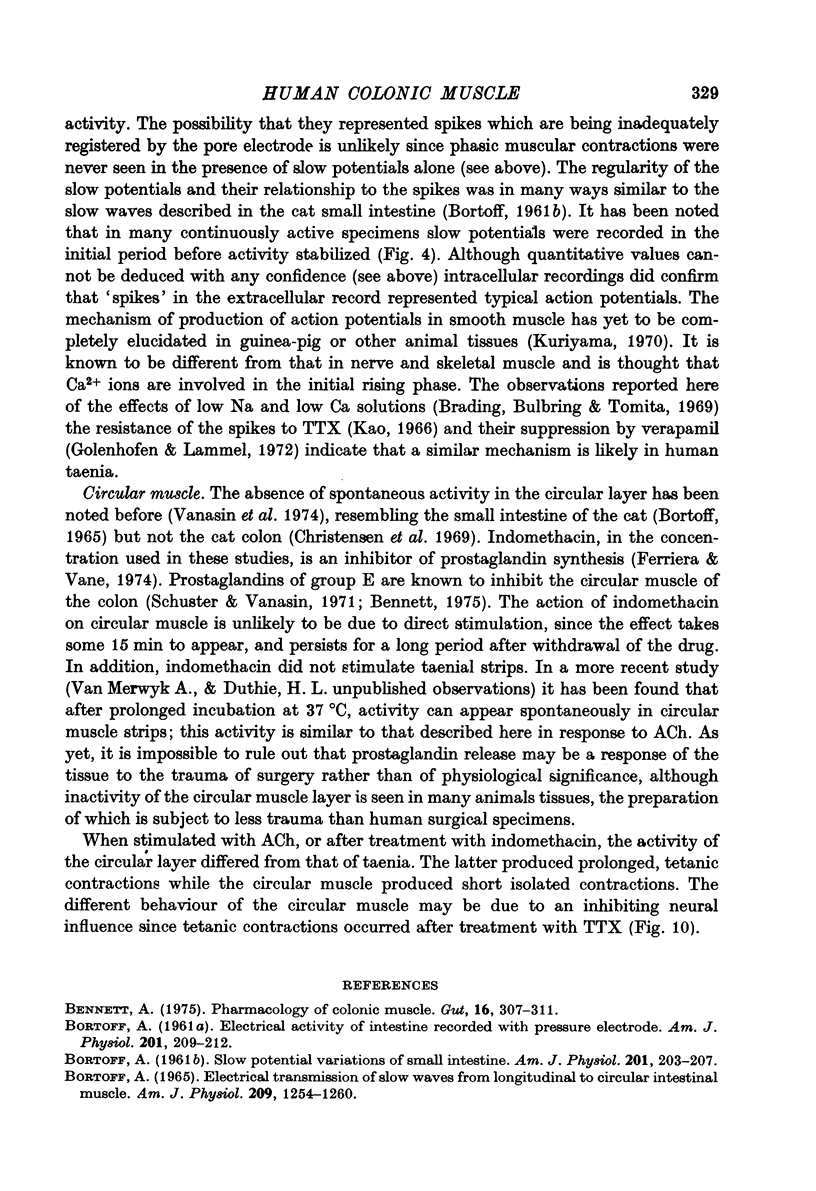
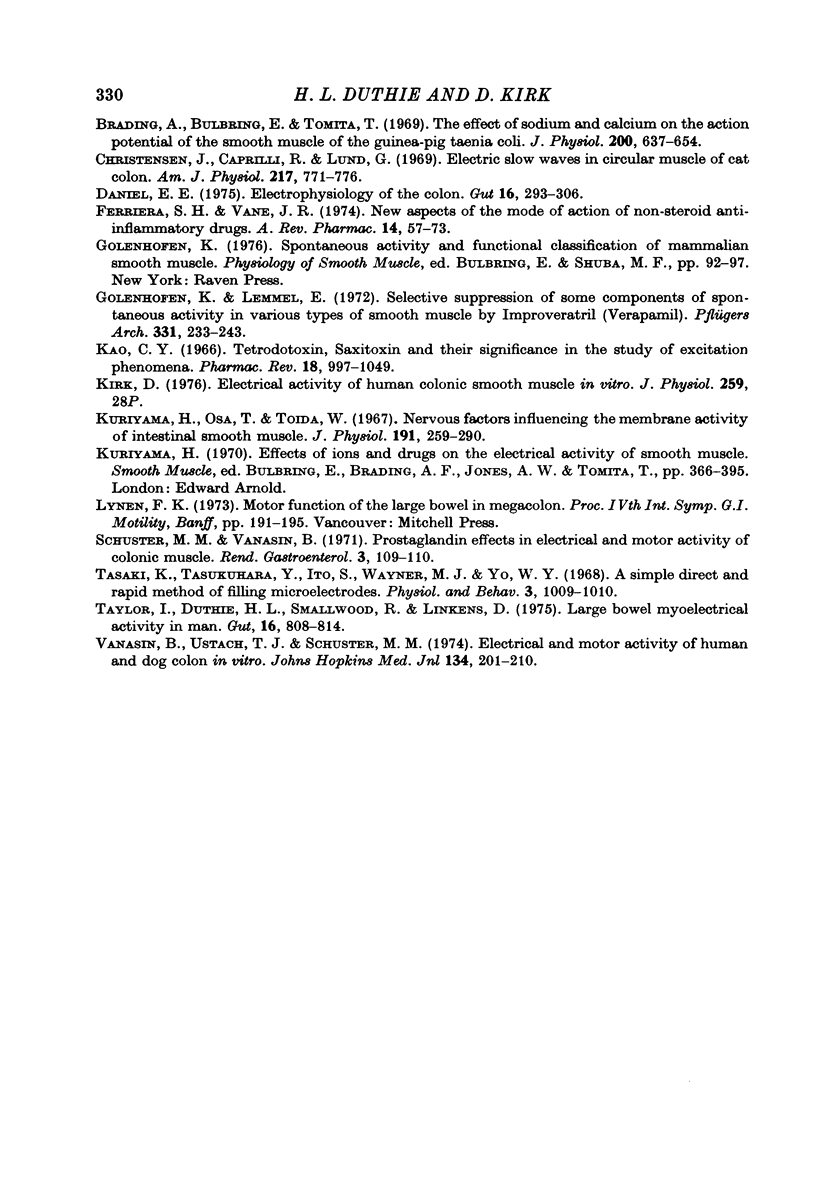
Selected References
These references are in PubMed. This may not be the complete list of references from this article.
- Bennett A. Pharmacology of colonic muscle. Gut. 1975 Apr;16(4):307–311. doi: 10.1136/gut.16.4.307. [DOI] [PMC free article] [PubMed] [Google Scholar]
- Bortoff A. Electrical transmission of slow waves from longitudinal to circular intestinal muscle. Am J Physiol. 1965 Dec;209(6):1254–1260. doi: 10.1152/ajplegacy.1965.209.6.1254. [DOI] [PubMed] [Google Scholar]
- Brading A., Bülbring E., Tomita T. The effect of sodium and calcium on the action potential of the smooth muscle of the guinea-pig taenia coli. J Physiol. 1969 Feb;200(3):637–654. doi: 10.1113/jphysiol.1969.sp008713. [DOI] [PMC free article] [PubMed] [Google Scholar]
- Christensen J., Caprilli R., Lund G. F. Electric slow waves in circular muscle of cat colon. Am J Physiol. 1969 Sep;217(3):771–776. doi: 10.1152/ajplegacy.1969.217.3.771. [DOI] [PubMed] [Google Scholar]
- Daniel E. E. Symposium on colonic function. Electrophysiology of the colon. Gut. 1975 Apr;16(4):298–306. doi: 10.1136/gut.16.4.298. [DOI] [PMC free article] [PubMed] [Google Scholar]
- Golenhofen K., Lammel E. Selective suppression of some components of spontaneous activity in various types of smooth muscle by iproveratril (Verapamil). Pflugers Arch. 1972;331(3):233–243. [PubMed] [Google Scholar]
- Kao C. Y. Tetrodotoxin, saxitoxin and their significance in the study of excitation phenomena. Pharmacol Rev. 1966 Jun;18(2):997–1049. [PubMed] [Google Scholar]
- Kirk D. Proceedings: Electrical activity of human colonic smooth muscle in vitro. J Physiol. 1976 Jul;259(1):28P–29P. [PubMed] [Google Scholar]
- Taylor I., Duthie H. L., Smallwood R., Linkens D. Large bowel myoelectrical activity in man. Gut. 1975 Oct;16(10):808–814. doi: 10.1136/gut.16.10.808. [DOI] [PMC free article] [PubMed] [Google Scholar]
- Vanasin B., Ustach T. J., Schuster M. M. Electrical and motor activity of human and dog colon in vitro. Johns Hopkins Med J. 1974 Apr;134(4):201–210. [PubMed] [Google Scholar]


